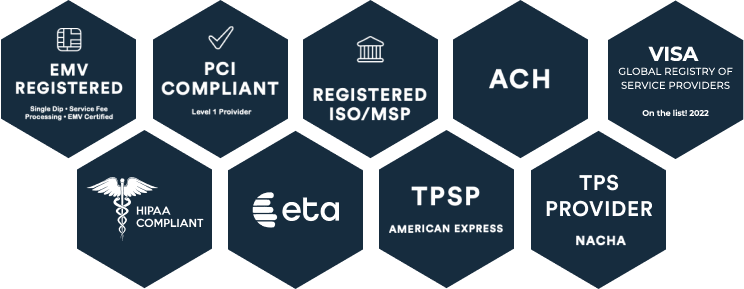Text-to-pay is a convenient and secure mobile payment method that allows consumers to pay for goods and services via text messages (SMS) or messaging apps. This technology leverages the ubiquity of mobile phones and the simplicity of text messaging to facilitate quick, hassle-free transactions.
In this article, we’ll cover what it means to pay by text, how it works, and if it’s the right payment solution for your organization.
We’re all more tied to our smartphones than ever—75% of Americans feel uneasy when they leave their phones at home, and 57% consider themselves “addicted” to their phones. About half of the world’s population uses smartphones, around 4 billion people. These devices continue to make themselves more relevant to our daily lives as time goes on.
Here’s a basic overview of pay-by-text systems:
- The user receives a payment request or invoice via text.
- The user responds by confirming or providing text payment authorization.
- The agency processes the transaction, charging it to a linked payment method.
Consumers can use text-to-pay for bill payments, purchases, enrollment, and renewal fees. Compared to traditional payment methods—including in-person payments or form-submitted transactions—pay-by-text systems allow users to complete secure, convenient transactions with just a few text messages.
As a direct and seamless way to pay, text-powered transactions are entirely self-service anytime, anywhere, and on any cellular device. This innovative solution eliminates the need for card readers for a truly mobile payment system.
Text-to-Pay: Key Features
Smartphone technology continues to bring innovations onto the scene, and consumers directly benefit from its convenience. Technology is finding its way into everyone’s business, and payment processes are no exception. Here’s how text-to-pay aligns with users’ evolving needs in an increasingly mobile-centric world:
- Convenient Transactions: Flexible text payment systems allow users to carry out transactions at home or on the go.
- Device Congruence: Users with any cellular device, including non-smartphone users, can pay by text message without using apps or other advanced technology.
- Automated Notifications: Automatic alerts, updates, and payment confirmation messages provide real-time text payment processes, supporting independent transactions.
- Direct Payment Experience: The entire process is a straightforward, efficient transaction, bringing the convenience of pay-to-text directly to the user’s fingertips.
Text-to-pay fosters empowered transactions between organizations and users by meeting consumers where they are. Pay-by-text systems deliver a user-friendly payment experience, prioritizing straightforward, secure transactions a user can complete within minutes.
Text-to-Pay FAQ
What Does It Mean to Pay by Text?
Smartphone technology continues to bring innovations onto the scene, and consumers directly benefit from the conveniences it brings. Technology is finding its way into everyone’s business, and payment processes are no exception.
Text-2-Pay is a modern solution allowing customers to authorize their payments through SMS. There’s no need to download any additional applications and it works with any smartphone.
How Do Text Payments Work?
The process of setting up text payments is simple. It’s more streamlined than other payment processing options. You’ll just send a text to customers prompting them to authorize their payment.
- The customer enters their payment information into a secure online form.
- When they’re ready, they’ll either text “PAY” (or a customizable prompt) to a secure text line, OR they can hit a button on the form that submits their payment automatically.
- All payment records are recorded and updated for the seller’s insight.
Once this process is complete, the customer benefits from the convenient authorization process, and the seller gets paid faster while also keeping records of transactions.
What Does It Mean to Pay by Text?
Pay-by-text means customers can make bill payments through SMS text messaging or messaging apps—there’s no need to download additional applications. Payments can be made on any mobile device.
How Does Text-to-Pay Work?
Text-to-pay operates through a user-friendly system that is more streamlined than other payment processing options. The process of setting up text payments is simple:
- The customer enters their payment information into a secure online form.
- The organization sends a text with a secure payment link, prompting the consumer to authorize their payment.
- Upon receiving the request, the user either texts “PAY” (or a customizable prompt) to a secure text line, OR they can hit a button on the form that submits their payment automatically.
- The payment provider processes the transaction with the user’s account-associated payment information.
- The organization sends a confirmation message to the user, confirming successful payment processing.
Once this process is complete, the customer benefits from the convenient authorization, and the organization gets paid faster while maintaining transaction records.
Is Text-to-Pay Secure?
Text-to-pay focuses on security, incorporating authentication measures and encryption protocols to protect user data and financial transactions. Reputable text-to-pay services employ security features like the following:
- PCI compliance
- Encrypted user-to-provider communications
- Secure payment links
- Identity authentication
- Unique tokenization
Users and text-to-pay providers following recommended security practices with secure networks and password-equipped mobile devices contribute further to the safety and security of text-to-pay transactions.
How Text-to-Pay Can Benefit Your Organization
For organizations looking for extra convenience and security, this payment model is a great option. Here are the top three ways text-to-pay adds value:
- Easy to use: The process is simple. Send your customer a text notification that a payment is due. The text has a link to a secure form the customer can easily access to enter their information and submit their payment. There’s no need to download apps, write checks, or make phone calls. It’s simple, secure, and straightforward.
- Improves cash flow: Getting paid quickly is vital in any business model, but sometimes clunky systems and processes make that difficult. Text-2-pay speeds up the process by using familiar technology and hardware without introducing complicated software.
- Meets customer demands: As it turns out, 72% of professionals prefer texting to other messaging platforms. You’re meeting them where they already are by sending them a text notification to authorize their payment. Nothing could be more convenient.
How Can Text-to-Pay Benefit Your Organization?
The text-to-pay model is an excellent option for organizations seeking extra convenience and security. Here are the top three ways text-to-pay adds value:
- Ease of Use: The process is simple. Send users a text notification that a payment is due with a link to a secure form the customer can easily access to enter their information and submit their payment.
- Convenience: Pay-by-text methods eliminate the need to enter lengthy card details, download apps, write checks, or make phone calls. It’s simple, secure, and straightforward.
- Accessibility: Text payments allow anyone with a mobile phone to complete transactions, fostering inclusivity by accommodating those without access to traditional banking methods.
- Increased Accuracy: By minimizing the need for manual data entry, text-to-pay lowers the likelihood of input errors that occur during transactions.
- Improved Cash Flow: Getting paid quickly is vital for any organization, but sometimes clunky systems and processes make that problematic. Text-to-pay speeds up the process using familiar technology and hardware without introducing complicated software.
- Enhanced User Experience: With the ability to pay by text, you meet users where they are by sending them a text notification to authorize their payment. Nothing could be more user-centric.
Text-to-pay methods make payments more accessible to a broad demographic, which can be particularly beneficial for government agencies, who must ensure services are available to all citizens. The streamlined nature further contributes to cost efficiency and streamlined workflows, leading to operational savings over time.


































